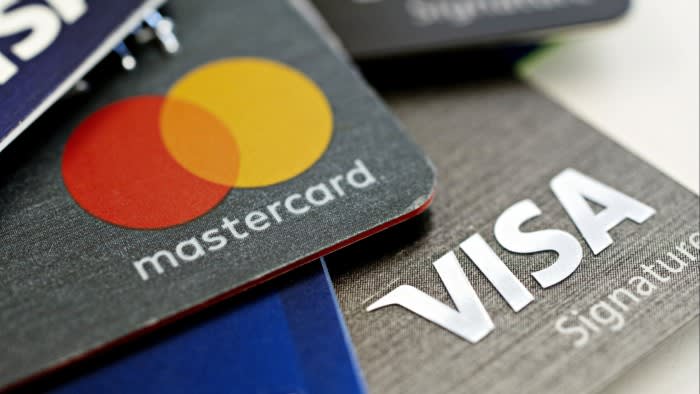Unlock the Editor’s Digest for free
Roula Khalaf, Editor of the FT, selects her favourite stories in this weekly newsletter.
Card transaction fees. Businesses hate them. Banks love them. Lawmakers want to cap them. Consumers often end up paying them in the form of higher prices for goods and services.
In the US, these fees are a long-running source of contention between merchants and payment processors. Visa and Mastercard, the two biggest card networks in the world, handled $14.8tn and $9tn worth of transactions respectively last year. Both are under fire from regulators for their dominant positions, with the justice department filing an antitrust lawsuit against Visa last month.
But some countries have found a workaround — in the form of instant payments. So-called account-to-account (A2A) systems allow customers to pay merchants directly from their bank accounts — often with a simple scan of a QR code — instead of using a debit or credit card. They have taken off in a big way in countries such as Poland, Thailand and Malaysia.
Brazil’s Pix, a real-time payment system created by its central bank just four years ago, has quickly grown to become the country’s most popular payment method by number of transactions, according to Worldpay. More than 153mn people — or about 75 per cent of the population — use it and it accounts for more than a third of total retail payment transactions. India’s Unified Payments Interface (UPI), which was launched in 2016, has more than 360mn users.
Instant pay helps bring more of the unbanked population into the financial system. It is low to no cost. For lower-income consumers, direct pay allows them to better manage their money. They can see exactly what they are spending on the day, compared with a stack of pending transactions. For merchants, it gives them more visibility on cash flows as they do not need to wait days for the transaction to be processed.
Despite all that, instant money transfers have not made much headway in the US. Zelle and Venmo are both more suited to sending cash to a friend than paying for everyday purchases. While digital wallets are hugely popular, users tend to link their cards to them rather than set up direct bank transfers. That means they still need Visa and Mastercard to process the payment.
Adoption of FedNow, the Federal Reserve’s answer to Pix launched last year, has been slow. For that, one can thank Americans and their love of credit cards and all the points-based rewards and cashback incentives that come with them. Cards also offer stronger fraud and purchase protection. FedNow is limited to domestic operations and cannot do cross-border transactions. Visa and Mastercard, with their global networks, can rest easy for now.


